- عنوان کتاب: Information in a Physical World -How the Meaningless Becomes the Meaningful
- نویسنده: Liqian Zhou
- حوزه: اطلاعات
- سال انتشار: 2026
- تعداد صفحه: 152
- زبان اصلی: انگلیسی
- نوع فایل: pdf
- حجم فایل: 6.70 مگابایت
دیگر دیدن کسی که از تلفن هوشمند خود برای چت رو در رو با دوستش در شهری دور استفاده میکند، حتی در حالی که در صف ایستاده تا با همان تلفن هوشمند یک فنجان قهوه بخرد، غیرعادی نیست. همچنین فکر نمیکنیم که جادویی باشد که ماشین شما بتواند با گفتن اینکه چه زمانی در جادههای ناآشنا به چپ یا راست بپیچید، شما را به مقصدی ناآشنا هدایت کند. ما حتی با توانایی مجریان قانون در شناسایی مظنون جرم با مقایسه شواهد DNA با دادههای موجود در یک پایگاه داده DNA عمومی آشنا شدهایم. هیچ یک از این نمونههای فناوری اطلاعات مدرن در حال کار، دیگر قابل توجه به نظر نمیرسند. همه آنها رویدادهای روزمره در عصر اطلاعات هستند. با این حال، جالب اینجاست که اگر بپرسید در این موارد چه چیزی را اطلاعات مینامیم، پاسخهای عجیب و غریبی دریافت میکنیم. یک مهندس ممکن است به شما بگوید که سیگنالهای الکتریکی است. یک طراح نرمافزار ممکن است به شما بگوید که بیت است. یک فیلسوف ممکن است به شما بگوید که معنا است. مانند تمثیل مردان نابینا که توضیح میدهند فیل شلنگ یا تنه درخت است، به نظر میرسد که ما قادر به درک کل چیز نیستیم، حتی زمانی که همیشه وجود دارد. سه ربع قرن از زمانی که کلود شانون تحلیل قطعی خود را از ریاضیات ارتباطات ارائه داد، میگذرد؛ تحلیلی که عملاً آغازگر عصر اطلاعات بود. بینش او در مورد ماهیت اطلاعات، انقلابی را برانگیخت که تقریباً تمام جنبههای زندگی را در قرن بیست و یکم تغییر شکل داد. و با این حال، از قضا، به ابهام نگرانکنندهای در درک ما از ماهیت اطلاعات نیز دامن زده است. همانطور که بسیاری از نویسندگان ابراز تاسف کردهاند، دقت فنی که تحلیل شانون به آن دست یافته است، تا حد زیادی به این دلیل امکانپذیر شد که او توانست هرگونه بحثی در مورد ویژگیهای ارجاعی (“دربارهمندی”) و هنجاری (“مفید”) اطلاعات را آنطور که به صورت محاورهای درک میشود، در پرانتز قرار دهد. وارن ویور در مقالهای معروف در مجله Scientific American (که الهامبخش پیشگفتار نسخهای از کتاب “گزارش فنی” شانون نیز بوده است)، این کاربرد ویژه را به شرح زیر توضیح میدهد: اول از همه، باید در مورد نحوهی نسبتاً عجیب استفاده از کلمه “اطلاعات” در این نظریه، شفاف باشیم؛ زیرا معنای خاصی دارد که، از جمله چیزهای دیگر، نباید به هیچ وجه با معنا اشتباه گرفته شود. و در پاراگراف مقدماتی «گزارش» خود، شانون همچنین روشن میکند که برای اهداف او نیازی به در نظر گرفتن این ویژگی تعریفکنندهی «اطلاعات» نیست، زیرا «این جنبههای معنایی ارتباط به مسئلهی مهندسی ربطی ندارند.» ویور همچنین هشدار میدهد که این کاربرد ویژه از کلمه «اطلاعات» اگر به دقت از درک عرفی این اصطلاح متمایز نشود، میتواند منجر به سردرگمی جدی شود. جای تعجب است اما واقعیت دارد که از دیدگاه فعلی، دو پیام، یکی به شدت پر از معنا و دیگری کاملاً بیمعنی، میتوانند در رابطه با اطلاعات معادل باشند. از قضا، تأثیر باورنکردنی فناوری این کاربرد ویژه و محدود از اصطلاح «اطلاعات» عملاً باعث شده است که این معنای ویژه، معنای محاورهای را تحت الشعاع قرار دهد. در دهههای اخیر، به اصطلاح، دم سگ شروع به تکان دادن کرده است، به طوری که معنای فنی و معنای محاورهای اغلب به جای یکدیگر قرار میگیرند یا به طور مبهم استفاده میشوند، گویی مترادف هستند. این امر به ویژه در برخوردهای رایجتر با مفهوم اطلاعات، مانند کتاب برندهی جایزه جیمز گلیک با عنوان «اطلاعات: یک تاریخ، یک نظریه، یک سیل» مشکلساز است. در حالی که با جزئیات شگفتانگیزی تاریخچه و پیامدهای فعلی این نظریه انقلابی را بازگو میکنیم، هیچ تلاشی برای بررسی سوالات مربوط به معنا یا کاربرد نمیبینیم، گویی این مسائل فرعی هستند. البته، تاریخ بحث فلسفی در مورد این مسائل «فرعی» هزارههاست که ادامه دارد و هیچ نشانهای از رسیدن به راهحلی نشان نمیدهد. از بسیاری جهات، این بحثها با اصطلاحات مختلف در مورد مسائل مربوط به بازنمایی، نظریههای دانش، مفهوم ارزش، ماهیت هدف و غیره انجام شده است. از زمان مشارکت شانون، این گفتگوهای فلسفی همچنین شروع به گنجاندن بحثهایی در مورد ارتباط این تفسیر خاص از مفهوم اطلاعات کردهاند. تلاشهای علمی برای ادغام نظریه اطلاعات در فلسفه ذهن و نظریههای دانش، منجر به انتشار تعدادی کتاب پیشگامانه در مورد اطلاعات توسط نویسندگانی مانند بار-هیلل و کارناپ، وینر، درتسک، میلیکان، فلوریدی و اسکایرمز شده است که تنها چند نمونه از آنها هستند. دانشکدههای دانشگاه، انجمنهای حرفهای بینالمللی و مجلات حرفهای متمرکز بر رویکردهای مختلف به اطلاعات نیز در طول سالها افزایش یافتهاند. بنابراین، ۷۵ سال پس از شانون، میتوان به طور منطقی فرض کرد که تنها تعدیلهای اندکی در دانش ما از اطلاعات امکانپذیر است. چگونه ممکن است پرسشهای اساسی وجود داشته باشند که مورد بررسی و پاسخ قرار نگرفته باشند؟ عنوان این کتاب – اطلاعات در دنیای فیزیکی – اشاره به این دارد که یک پرسش اساسی در واقع بیپاسخ مانده است. این عنوان به طور رمزآلودی دو درک کاملاً متفاوت را در کنار هم قرار میدهد.
We no longer find it unusual to see someone using their smartphone to chat face-toface with a friend in a distant city, even while standing in line waiting to purchase a cup of coffee with that same smartphone. Nor do we think it is magical that your car can guide you to an unfamiliar destination by telling you when to turn left or right down unfamiliar roads. We have even become familiar with the ability of law enforcement to identify a crime suspect by comparing the DNA evidence to data in a public DNA database. None of these examples of modern information technology at work seem remarkable anymore. They are all everyday occurrences in the information age. Curiously, however, if you ask what it is that we call information in these cases we get oddly diverse answers. An engineer might tell you that it’s electrical signals. A software designer might tell you that it’s bits. A philosopher might tell you that it’s meaning. Like the parable of the blind men explaining that an elephant is a hose or tree trunk, we seem unable to grasp the whole of the thing, even when it is ever-present. It’s been three-quarters of a century since Claude Shannon provided his definitive analysis of the mathematics of communication which effectively initiated the dawn of the information age. His insight into the nature of information sparked a revolution that reshaped almost every aspect of life in the 21th century. And yet, ironically, it has also contributed to a troubling ambiguity in our understanding of the nature of information. As many a writer has lamented, the technical precision that Shannon’s analysis achieved was in large measure made possible because he was able to bracket any discussion of the referential (“aboutness”) and normative (“useful”) attributes of information as it is colloquially understood. In a famous Scientific American article (that also inspired the foreword to a book version of Shannon’s “technical report”) Warren Weaver clarifies this special usage as follows: First off, we have to be clear about the rather strange way in which, in this theory, the word “information” is used; for it has a special sense which, among other things, must not be confused at all with meaning. And in the introductory paragraph of his “report,” Shannon also makes clear that for his purposes this defining property of “information” need not be considered because “These semantic aspects of communication are irrelevant to the engineering problem.” Weaver further warns that this special use of the word “information” can lead to serious confusion if not carefully distinguished from the common sense understanding of the term. It is surprising but true that, from the present viewpoint, two messages, one heavily loaded with meaning and the other pure nonsense, can be equivalent as regards to information. Ironically, the incredible technological impact of this special restricted usage of the term “information” has effectively caused this special meaning to eclipse the colloquial meaning. In the intervening decades the tail has begun to wag the dog, so to speak, with the technical meaning and colloquial meaning often becoming interchanged or used ambiguously as though they are synonymous. This is particularly problematic in more popular treatments of the concept of information, such as in James Gleick’s award-winning book The Information: A History, A Theory, A Flood. While recounting in wonderful detail the history and current implications of this revolutionary theory we find no attempt to even consider questions about meaning or use, as though these issues are peripheral. Of course, the history of philosophical debate over these “peripheral” issues has been raging for millennia and shows no signs of having reached a resolution. In many respects, these debates have been carried out with different terminology over issues of representation, theories of knowledge, the concept of value, the nature of purpose, etc. Since Shannon’s contribution, these philosophical conversations have also begun to incorporate discussions of the relevance of this special interpretation of the information concept. Scholarly efforts to integrate information theory into the philosophy of mind and theories of knowledge have given rise to a number of groundbreaking books on information by such authors as Bar-Hillel and Carnap, Wiener, Dretske, Millikan, Floridi and Skyrms, just to name a few. University departments, international professional societies and professional journals focused on different approaches to information have also grown in numbers over the years. So, 75 years after Shannon, one might reasonably assume that only modest adjustments to our knowledge of information are possible. How could there be any fundamental questions that have not been considered and answered? The title of this book—Information in a Physical World—hints that a fundamental question does indeed remain unanswered. The title cryptically juxtaposes two quite different understandings of the concept of information. On the one hand, bits of information in the form of physical images, texts and numbers are found everywhere in the modern world. This physicality is obvious, but its consequences tend to be relatively minor. On the other hand, the meaning conveyed by these tokens is not any part of their physicality, and yet it is nevertheless causally relevant, often initiating massive changes in societies and their physical surroundings. But this difference in effect seems to violate a common assumption that only physically present properties have causal effects.
این کتاب را میتوانید از لینک زیر بصورت رایگان دانلود کنید:
Download: Information in a Physical World



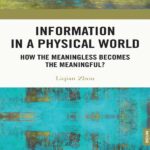
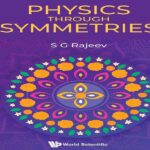



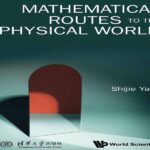




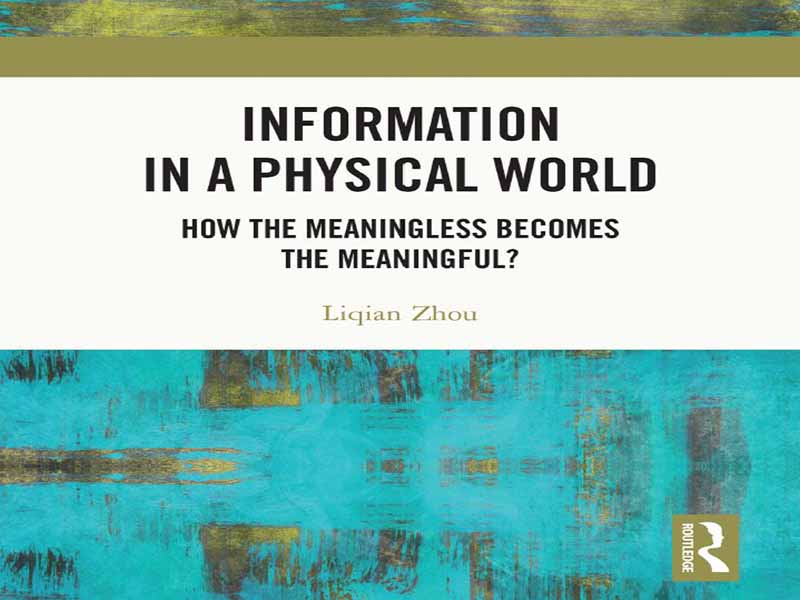




















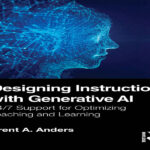

نظرات کاربران